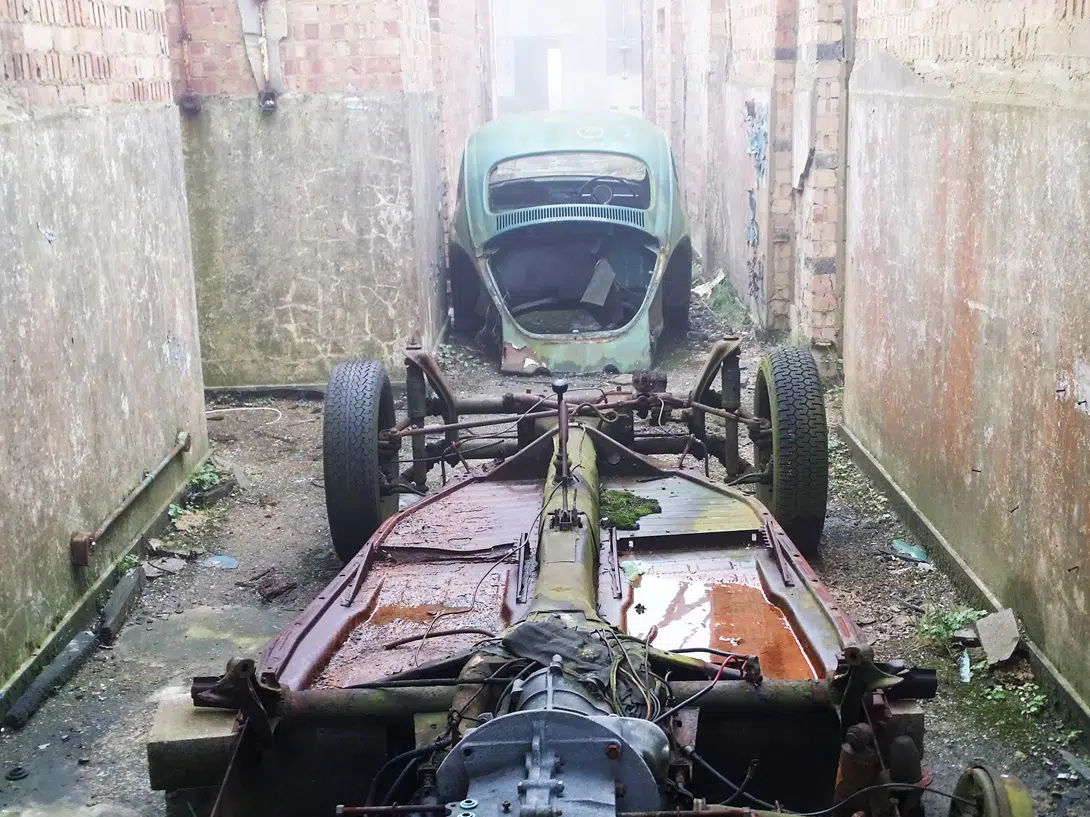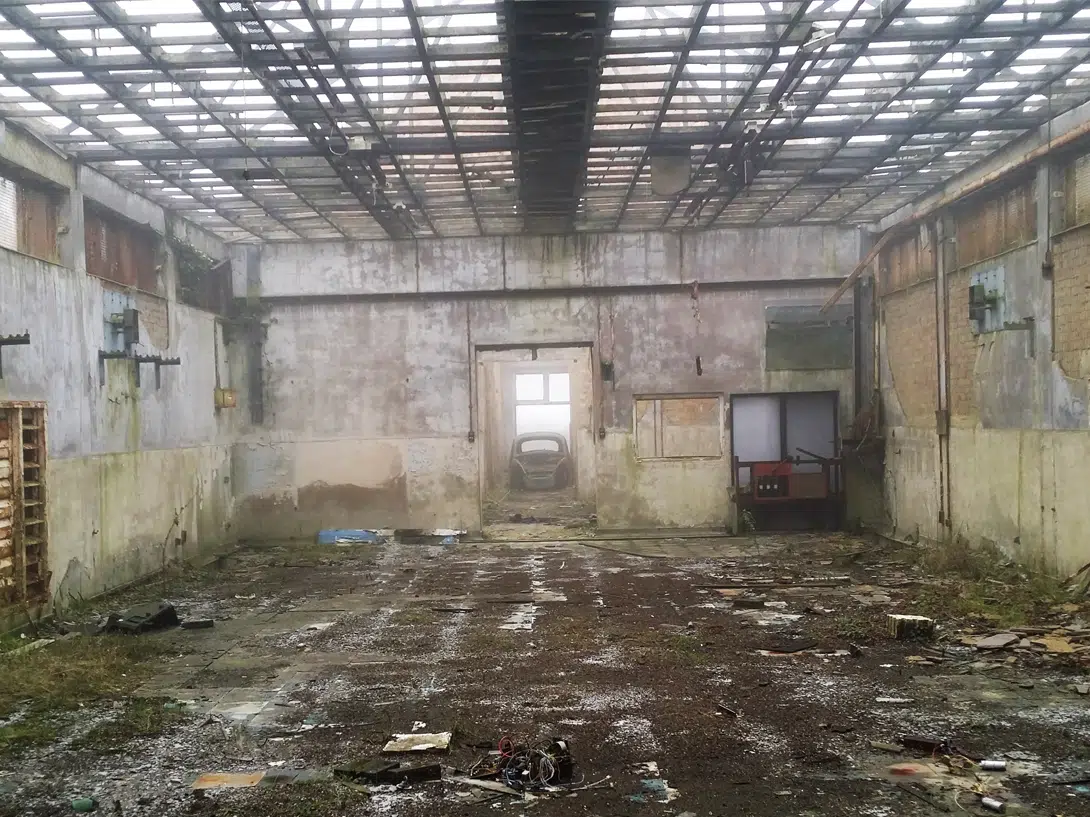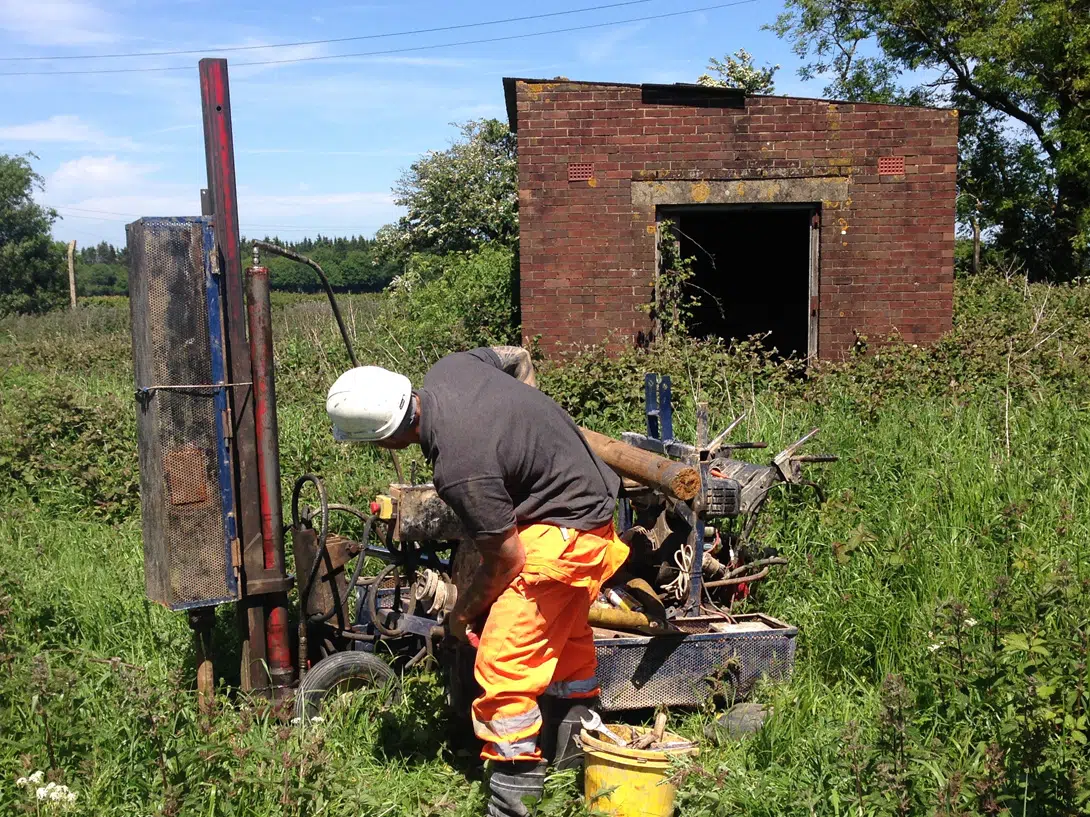
The client, who is a small developer, required a Phase 1 Desk Study to firstly support a planning application, and then a Phase 2 Site Investigation to discharge planning conditions. The proposed development comprised clearance of the site and construction of five luxury dwellings with large private gardens.
The Phase 1 Desk Study identified several buildings associated with the former military transmission station, including a large mast, various pits and a large above ground storage tank base. The objectives of the site investigation were to provide information on the contaminative status of the site, noting any associated risks and liabilities with regard to the proposed future use, along with obtaining information on the shallow and deeper ground conditions present at the site, including a sensitive Chalk aquifer.

The Phase 2 utilised a combination of trial pitting, windowless sampling, and environmental monitoring. The findings of the intrusive works enabled Lustre Consulting to prepare an assessment on the soil quality and suitability for residential use. Information on the geotechnical properties of underlying soils and foundation design considerations, including safe bearing capacity and settlement were also provided a the same time.

The findings of the investigation confirmed the suitability of the soils for residential use with private gardens with no significant remediation work required. The reports were subsequently approved by the local planning authority.
How we can protect your construction site from unnecessary delays and costs. If piling is part of your construction plans, a piling risk assessment could be a vital step to avoid potential problems that could disrupt your project, including: Piling risk assessments are now explicitly referenced within the Environment Agency’s Land Contamination Risk Management Guidance […]
How we can protect...
A surface water soakaway is used to capture then allow the infiltration and filtration of water runoff through a subsoil to the water table below. Your soakaway should provide sufficient short-term storage of surface water and allow the surface water to percolate into the surrounding ground. The National House-Building Council (NHBC) provides detailed guidance on […]
A surface water...
Working on a construction project can come with a long ‘to do’ list. Not only that, but you have to deal with the stress of navigating planning conditions as well as numerous building regulations. Acoustic issues don’t have to further complicate this process. Could an Acoustic Assessment be a requirement for your site? Of all […]
Working on a...
Contamination is not always something that can be seen; often contamination is invisible, buried below ground or is present in perfectly normal looking topsoil.
This is a question...